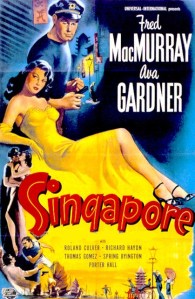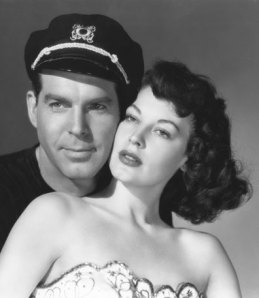 It’s hard to watch Jack Conway’s The Hucksters today and not compare it with Mad Men.
It’s hard to watch Jack Conway’s The Hucksters today and not compare it with Mad Men.
While Mad Men is a TV series that began in 2007 and takes place in the early ’60s and The Hucksters takes place during the time it was filmed (the post-war ’40s), they share a number of similarities, and not just because they’re both about advertising agencies.
Both feature at their center a dashing leading man with rugged good looks as an advertising genius who must navigate the tricky waters of love, sex, and difficult clients. Jon Hamm was in his mid-30s when Mad Men began, while Clark Gable was in his mid-40s in 1947, but both of their characters are veterans of the most recent war and inveterate seducers of women.
The Hucksters is based on Frederic Wakeman’s 1946 novel of the same name, which spent a year at the top of the best-seller lists. Wakeman’s novel was based on a four-part exposé in The Saturday Evening Post, “The Star Spangled Octopus,” about talent and promotional agency MCA.
The novel’s racy subject matter was largely responsible for its success. Life magazine called it “Last year’s best-selling travesty on bigtime advertising.”
Metro-Goldwyn-Mayer paid nearly $200,000 for the rights to Wakeman’s novel in a pre-publication deal. Most of the salacious details, however, never made it into the final shooting script. (Clark Gable’s take on the first draft of the script was, “It’s filthy and it isn’t entertainment.”) For instance, in the novel, Gable’s character, Victor Albee Norman, has an affair with a married woman, but she was changed into a war widow for the film.
Consequently, The Hucksters never quite achieves the satirical bite of Mad Men, but there are number of bits that are funny, particularly if you’re familiar with radio advertising circa 1947.
There are plenty of reasons to see The Hucksters. It was the American film debut of Deborah Kerr, who plays Gable’s widowed love interest, Kay Dorrance, and it also features the beautiful Ava Gardner as a torch singer named Jean Ogilvie. Adolphe Menjou is wonderful as Mr. Kimberly, the head of the advertising agency, and Keenan Wynn is appropriately irritating as a third-rate radio comedian named Buddy Hare.
The most memorable actor in the film, however, is Sydney Greenstreet, who plays Evan Llewellyn Evans, the grotesque and demanding head of Beautee Soap. After Gable’s character, Victor Norman, rejects the more scandalous layout favored by Evans, Evans sits down at the head of the boardroom table, tilts his head back, hawks, and spits on the table. “Mr. Norman, you’ve just seen me do a disgusting thing,” he says. “But you’ll always remember what I just did. You see, Mr. Norman, if nobody remembers your brand, you aren’t gonna sell any soap.”
The Hucksters could have used more moments like that. It’s nearly two hours long, and Gable’s romance with Kerr takes up much of the running time. It’s perfectly well-handled and shot, but it’s a storyline one could see in any number of pictures, while the advertising angle of the story is unique, and the film could have gotten more mileage out of it.
The Hucksters earned a respectable $4.4 million during its domestic release, but was a complete flop overseas, since in those days no one outside the United States was in any way familiar with American advertising or commercial broadcasting.



